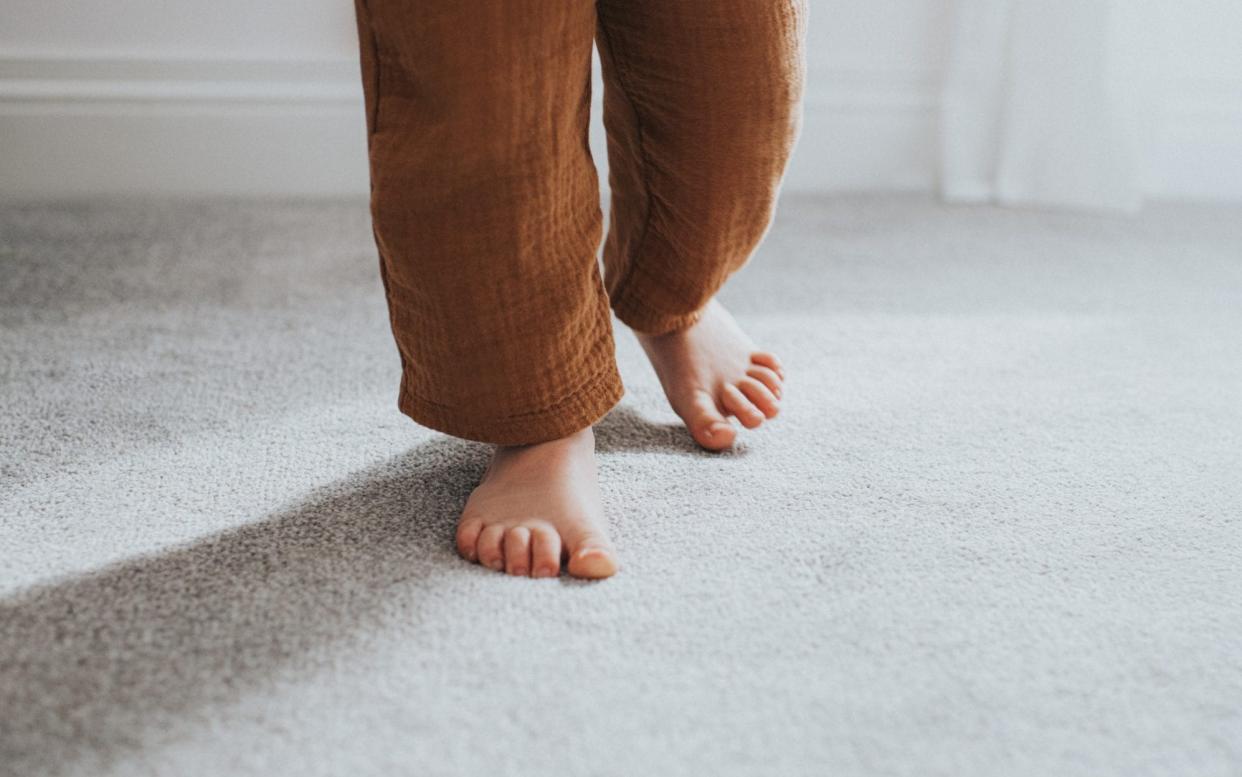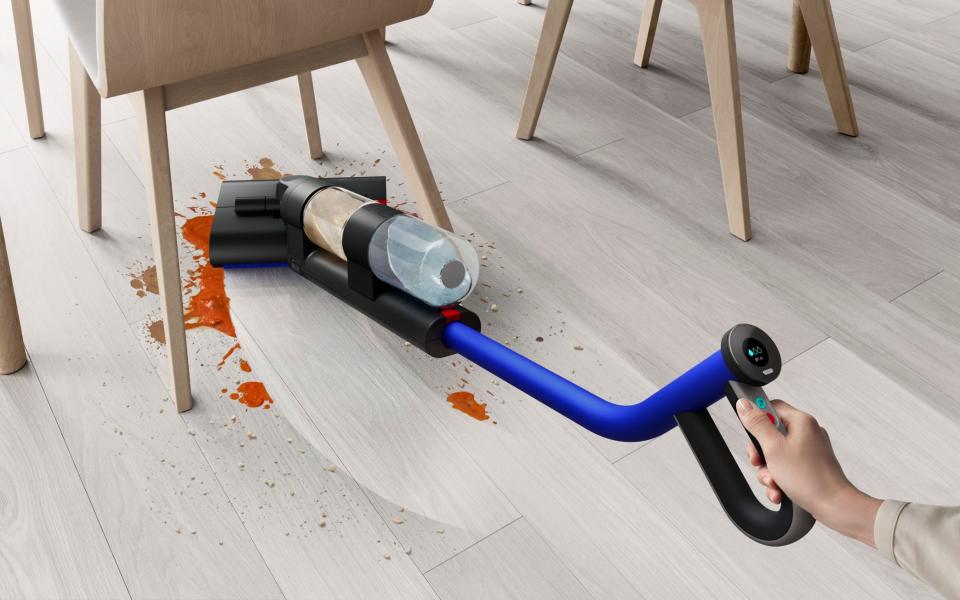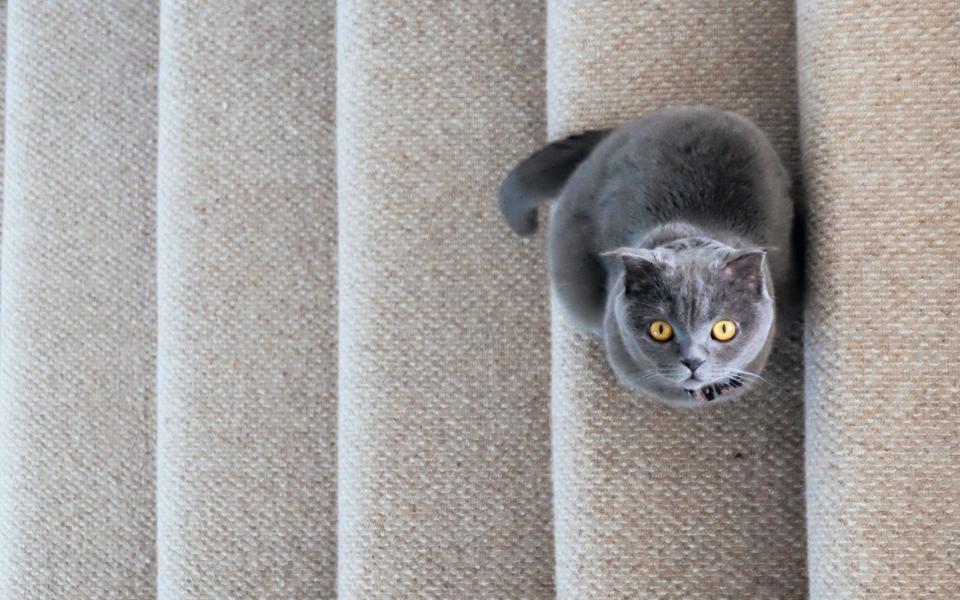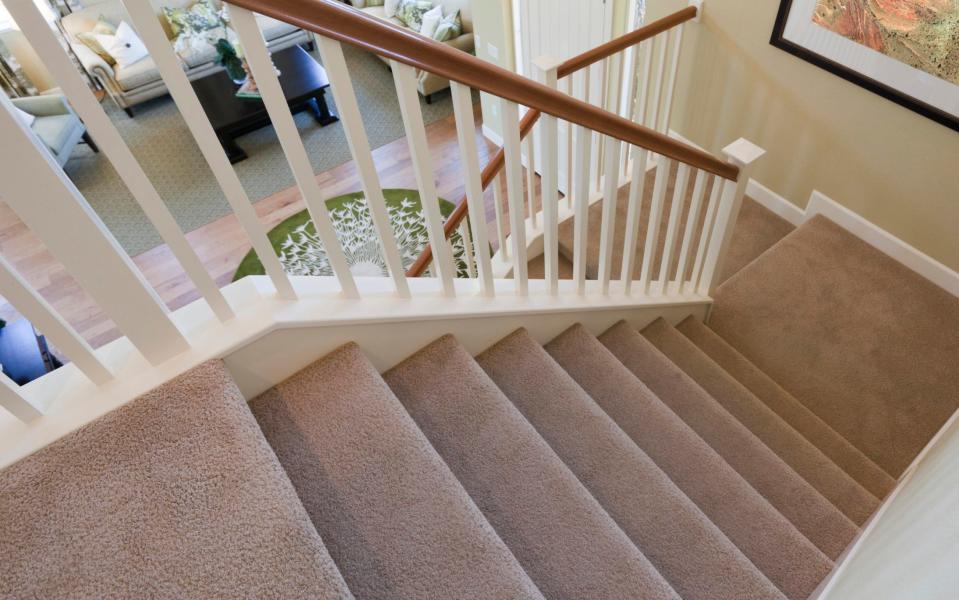Hard floors may be the fashionable choice – but it’s not over for the carpet yet

“When my grandfather started this business 60-odd years ago, it was only ever carpet – hard floors weren’t really a thing. It was a sign of wealth to have carpet; a luxury,” says Dewi Hughes. He knows what he’s talking about: his company, Linney Cooper, holds not one but two Royal Warrants to supply and install carpets and has been responsible for the flooring everywhere from Buckingham Palace to Balmoral. Nevertheless, adds Hughes, in the past decade the tables have turned: “It’s mainly hard floors these days.”
This chimes with a global dust study carried out by Dyson, which found that three-quarters of UK households have hard floors. Selling carpets, says Hughes, is now only about a third of his retail business – even members of the Royal family have hard floors in some places, although he’s far too discreet to say where.
Dyson does not hold a Royal Warrant – yet – but the seal of approval must surely be forthcoming given the aforementioned royal hardness after it recently announced a new product. The WashG1, priced £599.99, is the company’s first dedicated hard floor cleaner; essentially a jazzed-up electric mop that dries the floor for you afterwards.

I want one. When, a couple of years ago, my husband and I bought and renovated a house, the only decision when it came to the downstairs was whether to go for a wood floor or tiles. We plumped for wood, which accordingly stretches through our hallway, kitchen, sitting room and downstairs loo. Mopping it takes an age.
But what of the hard floor’s unloved cosy cousin the carpet? Is it really RIP to the rug? Or have we kicked carpet to the curb forever? Well, before you grab a claw hammer and start ripping, just pause for a moment and reflect that the carpet has been in and out of fashion in this country for at least a couple of centuries.
The first carpet weaving factory in England was built in 1655 in Wilton, Wiltshire, which was a hub for Britain’s wool trade. A wool carpet was a luxury that only the very wealthy could afford, woven especially for the area it was due to cover. The grand rug from the guest bedroom at Chatsworth, for example, was an Aubusson carpet bought by the 6th Duke of Devonshire in around 1800 (it’s still going strong although currently going through meticulous conservation and repair).
The first carpet loom, which sped up the crafting process, was patented in 1741 and soon factories were springing up: Axminster, in Devon, Kidderminster in Worcestershire and around London. While the early 20th century and the First World War meant there was little money for luxuries such as a carpet, a non-woven method of creating one – tufting – was developed. Combined with the invention of nylon and acrylic yarns, which made everything cheaper, it helped bring affordable carpet, with its attendant warmth and insulating properties, to the masses.
In 1957, the 20th-century tastemaker Nancy Lancaster installed wall-to-wall cream carpeting in her bathroom – by the 1960s and 1970s, the hoi polloi had followed suit and we were at peak carpet. It was being laid everywhere, and I mean everywhere: not just bedrooms and hallways and sitting rooms but, yes, in bathrooms and even kitchens (imagine your shag-pile carpet full of cheese and ham crumbs). Elvis Presley so adored carpet that at Graceland, he covered the walls, floors and ceilings in it.
Come this century, things had calmed down. In 2019, an investigation found that although almost nine in 10 Brits had carpet in their home, 40,000 tonnes of it were discarded every year – an area the size of Birmingham. As hard floor options became better and more attractive (remember that awful click-together faux-wood laminate?), people started replacing not only like for like – ripping up nasty 1980s lino to make way for more modern, hardwearing and decorative Amtico, for example – but putting it where they might once have had carpet.

The advent of cheap underfloor heating removed the need for a carpet’s warmth in areas like sitting rooms; a move away from the overstuffed interiors look of the 1980s towards a cleaner, more Scandinavian aesthetic made hard floors look like the more au courant choice, as well as being that much easier to clean.
And softness was easy to add with a rug on top. Carpet started to look dated and downright downmarket. Over-exuberant carpeting even became a frequent feature on the popular Spotted on Rightmove Reddit thread: one magnificently overly decorated home featured a red-carpeted bathroom with a carpet-sided bath mounted on a stepped carpeted dais, like a sort of central throne.
But… if you’re in the market for a new floor, don’t discount carpet entirely. “I reckon there’ll be a return to wall-to-wall carpeting,” declares Fiona McKenzie Johnston, contributing editor at House & Garden. It’s part of the steady softening we’ve seen of interiors in recent years, she adds: cushions in pretty fabrics, scalloped edges on everything, ruffled curtains galore, the antithesis of the minimalist greige Kelly Hoppen look.
For evidence, look no further than Lily Allen’s Brooklyn townhouse which went viral after featuring in Architectural Digest magazine in 2023: it features extravagant rugs, tiger-patterned carpeting in the den and, yes, wall-to-wall floral carpeting in the bathroom. And there’s no doubt that, as the cost of living continues to bite, a carpeted room will be much warmer – not to mention more acoustically pleasant – than a hard floor one, particularly if said hard floor is original floorboards with all their attendant draughts.
As ever, it’s all about where you use it and what you choose. “If you’re coming into a sitting room from the garden, you’re not going to want an off-white carpet, but you might want a lovely pale carpet in your bedroom,” says Emma Burns, managing director at Sibyl Colefax & John Fowler, which has recently relaunched a historic collection of Brussels weave patterned carpets.
“I’m a big fan of carpets – they pull things together,” Burns continues. “I’m even a huge fan of carpets in bathrooms, although I know I’m in a very small minority. There’s nothing more luxurious and cosy than getting out of your bath and stepping onto a bath mat on top of a lovely soft carpet. But I wouldn’t put it in a playroom where I knew my kids were going to throw everything on the floor and grind playdough into it.”

Carpeted stairs, according to Burns, are a good idea to stop noisy clattering, and she suggest an 80/20 wool-nylon carpet is the best option. If you’ve got hard floors meanwhile, it’s always nice to soften them with a rug or a runner on top. McKenzie Johnston advocates sisal, a densely woven natural fibre, for a chic country house look in bedrooms, stairs and sitting rooms alike, echoing as it does the rush matting of old. The upmarket flooring company Crucial Trading, which specialises in natural floor coverings, now has a turnover of more than £5.5 million.
Whatever you go for, these days a loop pile carpet – where the loop of wool is left closed rather than cut – looks more modern, vacuums better (no stripy marks) and tends to age better, too. Hughes says that although the majority of the carpet that he sells is man-made fibre carpet in neutral colours such as light grey (easy to clean at a nice price point), he himself is “a carpet snob” and is a big advocate for wool. “It gives a bit of warmth, helps from an allergy perspective, is natural and good for the environment,” he says. In his own bedroom, as a parent of three young children, he has a two-tone wool loop textured carpet with a bit of a fleck “to hide the dirt”.
Because, let’s face it, it does all come back to cleaning and the gritty issue of cost. According to the Office for National Statistics, which tracks sales of carpets, these have climbed steadily since the 1980s and by 2022 stood at £31.24 million. But there have been casualties too: last year, it emerged that former Royal red carpet maker Victoria, which dates back to 1895, had racked up a £19 million loss as demand hit its lowest since 2008.
While you can pick up basic carpet for as little as £20 per square metre, an off-the-shelf Axminster will set you back between £80-£100 for the same; Sibyl Colefax & John Fowler’s newly reissued carpets, meanwhile, start from £272, plus VAT. A decent Amtico or hard-wood floor by contrast will set you back around £45-£50 per square metre (it also won’t get infected with moths). Leaving you cash to spare for that £599.99 Dyson mop.

